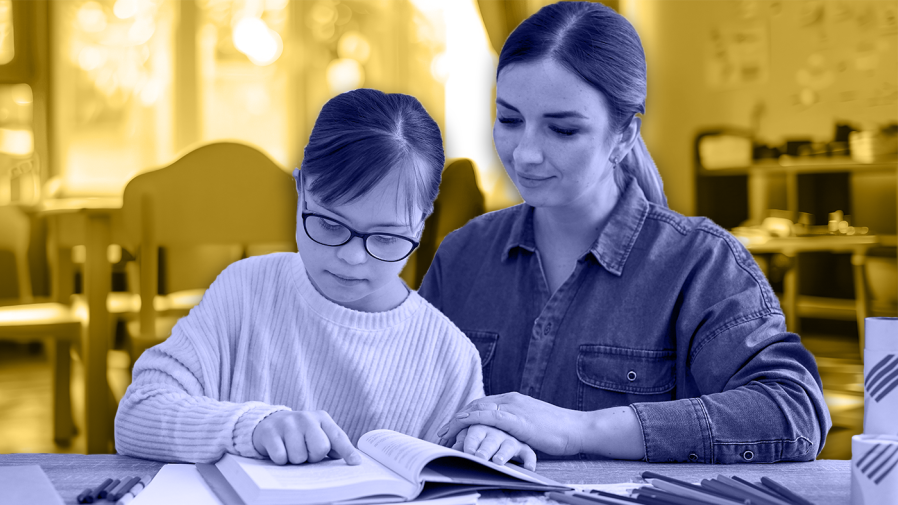What are microschools? The small classrooms growing large in the school choice movement

An educational environment that is tricky to define and difficult to track, microschools have popped up as a growing alternative to traditional schools across the country.
The small classroom settings have become increasingly popular since the pandemic, especially among parents with neurodivergent students.
Advocates are hopeful the trend will continue to grow as it has been riding a wave within the increased popularity of school choice, but some raise concerns about accountability within these institutions.
‘They’re hard to define’
Microschools are small private institutions that serve a median of 16 children and offer full-time, part-time or hybrid instruction, according to the National Microschooling Center.
“For the microschools, first of all, they’re hard to define and I think that’s a good thing. The schools tend to be environments where families and small groups of people — sometimes larger groups of people — are directing the education in a much more personalized and individualized way,” said Robert Enlow, president and CEO of EdChoice, a school choice advocacy organization.
That difficulty in defining comes from a broad range in everything from how the schools are run to who is enrolled and the size and composition of the staff, though they typically don’t have a nurse or counselor on hand.
Supporters say the tiny class sizes are particularly attractive for neurodiverse students and, increasingly, for racial minorities
In terms of parents choosing microschooling, 48 percent of families match the average income level in the area the microschool is held, 28 percent had slightly below the area’s average income, 12 percent are significantly below it and another 12 percent are above it.
The microschooling movement has been around for decades, but advocates said have really gained attention since the pandemic as school choice programs and interest skyrocketed, fueled by concerns including school safety and overcrowding.
“It’s not at all just driven by school choice policies. I mean, you certainly did see growth of certain kinds of schools in the states that have school choice programs, but we see just as much interest in the blue and purple states that are not likely to see those kinds of programs anytime soon. It’s a broad, diversified base,” said Don Soifer, CEO of the center.
A mix of private and public funding
The way these schools are funding depends on the state it is set up in, including options for public funding.
The center found 43 percent of microschools charge between $5,000 and $10,000, 30 percent are under $5,000, 17 percent are $10,000 to $15,000, 15 percent are $15,000 to $20,000 and 3 percent are more than $20,000.
At least six states have universal or almost universal education savings accounts, which give parents a certain amount of taxpayer money that they can use on their children’s education if they are not going to public schools. Parents can spend the money on most school choice options, including homeschools and private schools.
Sixty-three percent of the schools’ funding comes directly from parents in the form of tuition, while 32 percent comes from state-funded school choice programs, the National Microschooling Center found.
“Micro-schools appear to be another strategy to privatize public education. Funding for these schools mostly come from tuition/fees and public state provided funds made possible by taxpayer dollars,” said Weadé James, senior director for K-12 policy at the Center for American Progress.
Concerns about accountability
A big concern for those looking at the rise of microschooling is the lack of government regulation and accountability that can be had in such hard-to-define learning environments.
“Since there’s no clear definition (federal or state) of micro-schools, we don’t know the full landscape of where these schools are, how they’re structured and who they’re serving,” James said.
“A recent analysis conducted by the National Microschool Center (NMC) found that 84% of micro-schools are not accredited. These schools also do not use state-approved curriculum but are receiving state funds,” he added.
The center found 38 percent of microschools are run by currently licensed educators, 33 percent are formerly licensed educators and 30 percent do not have an educators license.
Among the current founders of microschools, 50 percent say this is the first time they have launched a business.
“The traditional schools are not performing up to snuff, and I would argue, on the accountability front, part of the reason families are choosing these kind of options is because of the failure of accountability [in public schools],” Enlow said.
Microschools are serving around 1 percent of all students in the U.S., but “at the present rate of growth,” Enlow said, his group hopes to get that up to 10 percent in the next few years.
Copyright 2024 Nexstar Media, Inc. All rights reserved. This material may not be published, broadcast, rewritten, or redistributed.
For the latest news, weather, sports, and streaming video, head to The Hill.

 Yahoo News
Yahoo News 
